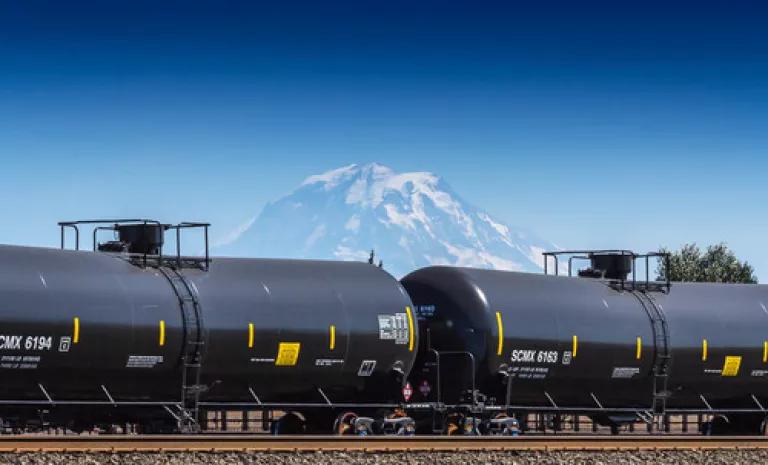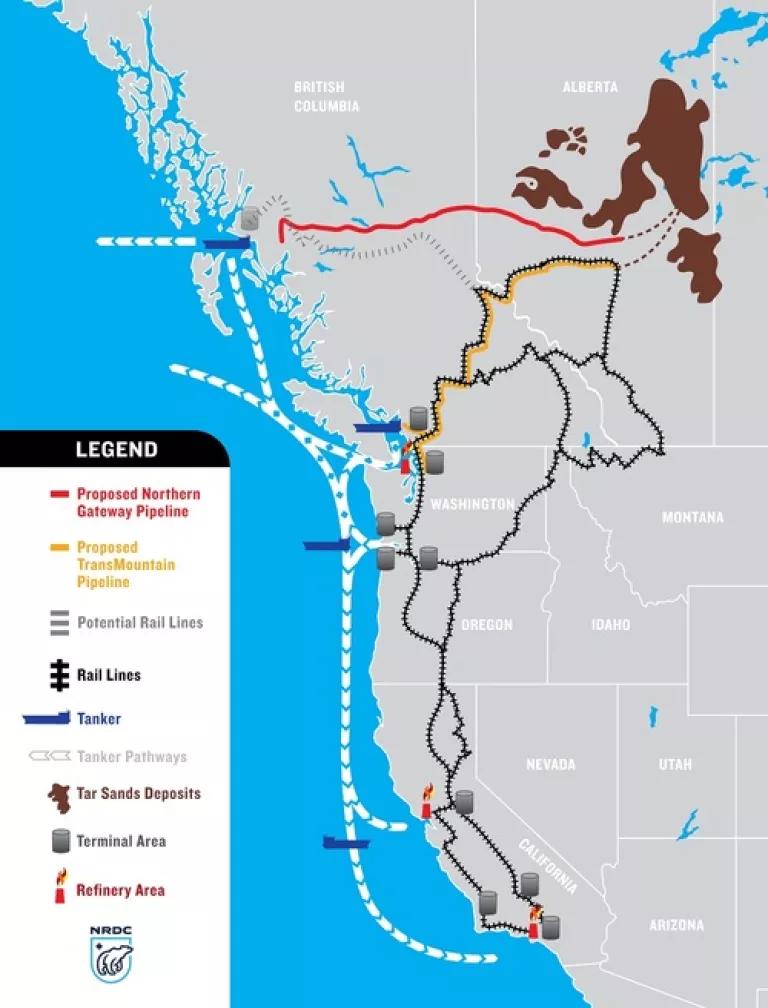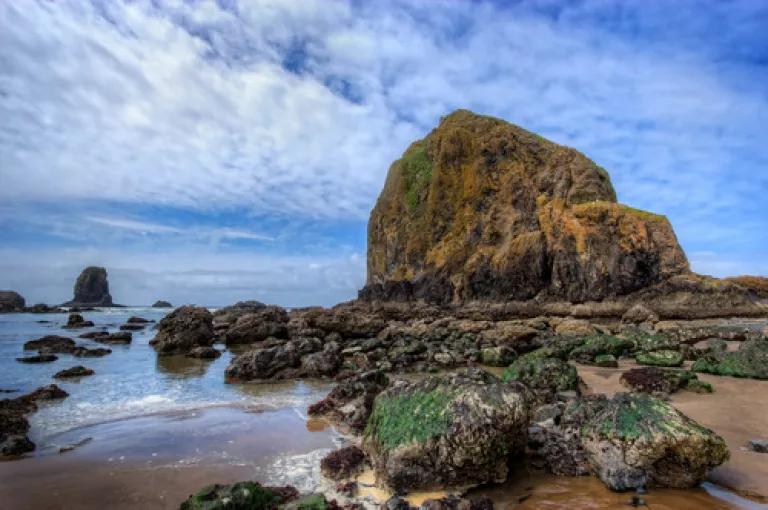New Report Examines Threat of Huge Increases in Shipments of Tar Sands to Washington and Oregon

A tar sands invasion of Washington and Oregon is threatening the states' communities, waterways, coastlines and air. In a new report, NRDC examines the tar sands threat faced by the entire North American West Coast, from British Columbia to California. Compiling data on refining trends, infrastructure proposals, and tar sands production projections, the report finds that the amount of tar sands crude oil moving into the region could increase by more than 1.7 million barrels per day (bpd). This enormous influx would be made possible by two proposed tar sands pipelines crossing British Columbia, construction of numerous crude-by-rail handling facilities around the entire region, and thousands of new oil tankers and barges navigating the region's waters. In addition to this influx, an analysis by the Borealis Centre shows that mid-term refining trends could lead to an eight-fold increase--800,000 bpd by 2040--in tar sands crude oil being refined in Washington and California refineries. Despite the gravity of this threat, a potential tar sands invasion presents policymakers with a variety of options to stop it in its tracks. By implementing forward-looking policies that will reduce Washington and Oregon's carbon emissions and help the Pacific Northwest transition to an alternative energy future, a tar sands invasion of Washington and Oregon can be stopped if action is taken soon.
The Tar Sands Threat to the Pacific Northwest
The threat of a tar sands invasion of the Pacific Northwest could come from several fronts. A pipeline spur from British Columbia to Washington refineries could begin pumping larger volumes of tar sands into the region; tankers from Northern British Columbia and Vancouver, British Columbia could bring their cargo to Washington refineries; the region's many ports could become major conduits for tar sands exports to Asia and other international markets, and mile-long trains loaded with 3 million gallons of tar sands oil could traverse Washington and Oregon destined for Washington and California refineries, or the region's many ports. The risks posed by each of these threats are serious and are discussed below. More detail on this issue can be found in NRDC's issue brief focused on the Pacific Northwest as well as the blogs of my co-authors and colleagues Danielle Droitsch and Anthony Swift.

- Oil Tankers and Barges. If all proposed pipelines and crude-by-rail handling facilities are built, the West Coast could see an increase in oil tanker and barge traffic totaling 2,000 additional vessels. This is estimated to be a five-fold increase over current numbers of oil-laden vessels navigating British Columbia, Washington and Oregon waterways and coastlines. An increase in this magnitude places areas like the Salish Sea, Grays Harbor, the lower Columbia River, and the entire length of the Washington and Oregon coasts at risk from a tar sands crude oil spill. Increased risk of a tar sands spill in Pacific Northwest waters poses an unmistakable threat. Washington and Oregon's major rivers support each state's huge agricultural sector; act as major transport corridors; drive a thriving tourism industry; and provide tribes and others with critical income from salmon, steelhead, and other fish. Meanwhile, the region's coasts, bays, and sounds provide habitat for numerous endangered and threatened species that are extremely vulnerable to increased shipping traffic and spilled oil. If a tar sands spill occurred, tragic and substantial impacts to the region's rivers and coast are likely and would lead to dangerous long-term contamination, expensive cleanup, and long-term economic harm.

- Refining. There are currently five operating oil refineries in Washington, which process 630,000 bpd of crude oil. Today, about 60,000 bpd of this capacity is filled by tar sands, with most of it arriving in the Anacortes area via Kinder Morgan's existing Puget Sound Pipeline system. However, proposals to expand the capacity of the Puget Sound Pipeline, new and proposed crude-by-rail handling facilities located at Washington's refineries, as well as pipeline and rail proposals further north in British Columbia, could nearly triple the amount of tar sands refined in the area. If this were to occur, communities nearby could face decades of elevated health and safety risks associated with tar sands refining. These include increased levels of highly toxic fugitive emissions; heavy emissions of particulate, metals, and benzene; higher risk of refinery accidents; and the accumulation of petroleum coke (a coal-like byproduct of heavy oil refining linked to severe respiratory impacts). In sum, these risks expose communities to a host of health risks that can affect eyes, skin, the nervous system, and the respiratory system.

- Rail. The threat of increased transport of tars sands crude by rail through the Pacific Northwest could lead to several negative consequences for the region. First, seven existing crude-by-rail handling facilities have already lead to major increases in the number of mile-long oil trains--especially along the Columbia River, and through several major population centers like Portland, Tacoma, and Seattle. Second, proposals for six new or expanded terminals could almost double the region's crude-by-rail capacity from around 360,000 bpd to 946,000 bpd. Because evidence suggests that all of these facilities are being designed to eventually handle tar sands crude, the Northwest could see substantial quantities of tar sands moving on its rails for decades. The current surge in crude-by-rail traffic through Washington and Oregon, accompanied by the potential for prolonged rail transport of tar sands comes with many concerns. The Pacific Northwest's rail infrastructure is aging and at risk of serious failures. Towns and cities across the region were built around rail, and major business districts, residential areas, and schools often lie within sight of the tracks, placing huge populations at immediate risk of harm from a derailment and the strong potential for release of toxic chemicals, explosions, and fires. Meanwhile, rail infrastructure is often located in immediate proximity to critical waterways, increasing the likelihood of a derailment and spill into water. This possibility is seriously concerning, especially since it was recently revealed that neither Washington nor Oregon emergency responders have been notified, trained, or resourced to respond to a spill of tar sands.

Stopping a Tar Sands Invasion
The good news is that a tar sands invasion can be stopped. As policymakers and decision-makers at all levels begin recognizing the increasingly dire threat posed by climate change, the political will to stop dirty energy projects from proceeding is growing. In their place, creative alternatives that accelerate the West Coast's and the rest of the world's transition to a post-fossil fuel economy are being developed and implemented. For the Pacific Northwest, stopping the West Coast tar sands invasion will require policies that prevent new tar sands infrastructure form being built while reducing the region's overall dependence on oil through low-carbon transportation and energy solutions. Several key policy solutions for the region include:
- Reject new tar sands infrastructure, including all proposed tar sands-by-rail terminals.
- Strengthen environmental review of new oil infrastructure projects, including an assessment of both the direct impacts as well as all cumulative impacts related to upstream production and downstream consumption.
- Stop tar sands tanker traffic until federal officials understand the unique risks associated with tar sands spills and how to respond to them.
- Adopt, implement, and strengthen existing or proposed low-carbon fuel policies.
- Work with California and British Columbia to develop and harmonize low-carbon transportation solutions for the region.
- Ensure state- and region-wide carbon emissions are further limited through mechanisms that incentivize polluters to make additional cuts to their emissions.
- Improve alternative and mass transportation solutions within and between Oregon and Washington.
- Expand community programs that encourage more walk-able and bike-able streets and access to transit.
- Push for electric vehicle policies that support rapid deployment of vehicles, encouraging a strong utility role and grid support

